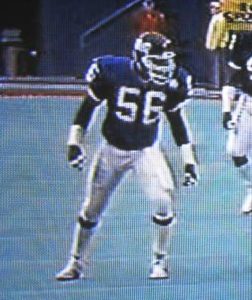Nuclear Energy Activist Toolkit #52
56
It’s the sum of six consecutive prime numbers (3, 5, 7, 11, 13, and 17).
It’s the jersey number worn by Lawrence Taylor, a Hall of Fame football player.
It’s the number of the car driven by Martin Truex Jr. to a 12th place finish in the 2012 Daytona 500 automobile race.
And it’s the number of quarters that the Nuclear Regulatory Commission has posted performance results from the Reactor Oversight Process (ROP) the agency began using in 2000 to assess safety levels at the nation’s operating nuclear power reactors.
The ROP uses nearly two dozen Performance Indicators and findings by NRC inspectors to “grade” performance for each nuclear power reactor every quarter.
When the performance indicators fall within expected ranges and the NRC’s inspectors haven’t found serious problems, the NRC puts a reactor in the Licensee Response Column of the ROP’s Action Matrix.
If one or more performance indicators reveal declining performance and/or the NRC’s inspectors find more serious problems, the NRC places a reactor into other Action Matrix columns.
The Licensee Response Column, also called Column 1, is where reactors are supposed to be. When they are not, the NRC sends more and more of its inspectors to the site to more fully understand the context behind the declining performance and ensure the effectiveness of corrective actions intended to halt the decline and restore performance to the level needed to return to Column 1.
A total of 104 reactors operated during those 56 quarters (five reactors permanently shut down towards the end of that period, but operated for the majority of the quarters.)
Only three reactors in the country resided in Column 1 for each and every one of those 56 quarters. That’s 14 years of always performing as expected. The reactors compiling this stellar performance record are:
Catawba Unit 2 (York SC)
LaSalle Unit 1 (Marseilles, IL)
South Texas Project Unit 1 (Bay City, TX)
That this outcome is a commendable accomplishment is reflected by the fact that none of the 101 other nuclear reactors in the country were able to avoid dropping out of Action Matrix Column 1 for at least one quarter during that 14-year period.
That this accomplishment warrants recognition is also reflected in the fact that these three reactors each has a second reactor of the same design, operated by the same owner, and staffed by the same workers operating right next to it. Catawba Unit 1, LaSalle Unit 2, and South Texas Project Unit 2 may have performed well, but they were unable to achieve perfect safety records.
Bottom Line
Two sports numbers associated with 56 opened this commentary. Perhaps the more apt sports reference would have been to Joe DiMaggio’s streak hitting at least one base hit in 56 consecutive games in 1941.
Catawba Unit 2, LaSalle Unit 1, South Texas Project Unit 1, and Joe DiMaggio did not reach 56 simply by showing up. It took lots of effort and skill.
Some might claim it involved some luck. If so, the old saying about luck happens when preparation meets opportunity is also involved.
Congratulations to Catawba Unit 2, LaSalle Unit 1, and South Texas Project Unit 1 for achieving—and sustaining—Hall of Fame performance levels.
The UCS Nuclear Energy Activist Toolkit (NEAT) is a series of post intended to help citizens understand nuclear technology and the Nuclear Regulatory Commission’s processes for overseeing nuclear plant safety.


